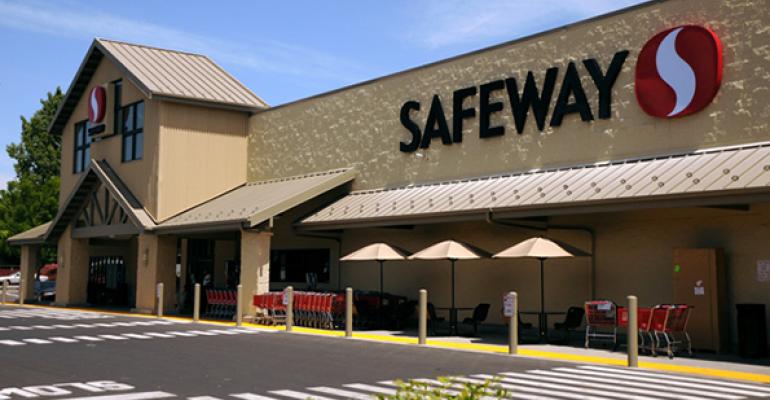The supermarket sector has been one of the most active markets for mergers and acquisitions (M&A) over the past two years, and there’s no reason to think the activity will slow this year. Retailers will continue to opportunistically seek acquisitions to drive earnings growth, and the ongoing consolidation could translate into big changes for shopping center owners, experts say.
“In the grocery sector, there are clear benefits to being larger,” says Louis Biscotti, global practice leader for the food and beverage group at tax advisory firm WeiserMazars. “Being able to spread the overhead across thousands of stores creates economies of scale. And the bigger you are, the more leverage you have with food manufacturers and wholesalers.”
There were 37 supermarket M&A deals in 2014, compared with 28 deals in 2013, according to preliminary numbers from The Food Institute, a nonprofit information source on the food industry. The organization’s Food Business Mergers and Acquisitions report will be released in late February.
According to a source from The Food Institute, the supermarket sector hasn’t experienced such robust M&A activity since 2003 when there were 36 supermarket deals. The largest acquisition last year was AB Acquisition LLC’s purchase of Safeway Inc., which is worth about $7.64 billion in cash, and pending other transactions could top $9 billion. Other notable deals were Alimentation Couche-Tard Inc.’s purchase of The Pantry for approximately $861 million.
Food retailers overall (including convenience stores and other such retailers) made up 14.2 percent of all food industry mergers in 2014, with 72 total deals, a 75 percent increase over 2013.
“More and more companies are recognizing that organic growth is difficult to achieve, and that acquisitions are the fastest way to grow,” Biscotti says. “There are still a lot of candidates that are ripe for acquisition, and I think we’ll continue to see very large deals.”
Analyzing Albertsons-Safeway deal
Private equity has played a significant role in the supermarket M&A activity. AB Acquisition LLC, for example, is privately owned by Cerberus Capital Management, Kimco Realty Corporation, Klaff Realty, Lubert-Adler Partners and Schottenstein Stores Corporation. The company, widely known as Albertsons, operates ACME, Albertsons, Jewel-Osco, Lucky, Shaws, Star Market and Super Saver, as well as stores under the United Family of stores, Amigos, Market Street and United Supermarkets.
The Albertsons-Safeway merger creates a network that includes more than 2,400 stores, more than 20 distribution facilities and 20 manufacturing plants with over 250,000 employees.
Albertsons’ CEO Bob Miller says the deal “will enable us to create cost savings that translate into price reductions for our customers. Together, we will be able to respond to local needs more quickly and deliver outstanding products at the lowest possible price, more efficiently than ever before.”
The Albertsons-Safeway deal was so large it brushed up against federal antitrust rules. The Federal Trade Commission required the companies to sell off 168 stores in markets where there was significant overlap.
In San Diego, for example, Safeway owns 26 percent of the market share. Albertsons, meanwhile, owns about 15 percent. Combined, the two chains owned more than 40 percent of the market. And it was the same situation in other markets, such as Seattle.
“The government wasn’t going to let them be number one in these markets already and add more stores,” says Andy Couch, managing director of supermarket advisory services for DJM Real Estate, a division of Gordon Brothers Group Co. “They had to divest because they would have had a monopoly. The stores they’re selling are good stores, and it’s an ideal situation for a new entrant to the market.”
The stores, which are spread across eight states, generated a lot of interest from investors, even drawing the attention of real estate titan Sam Zell. But he didn’t end up with the prize.
Just before Christmas, Albertsons and Safeway inked agreements with four buyers to acquire the stores. Associated Food Stores (AFS) will purchase eight stores in Montana and Wyoming; Associated Wholesale Grocers (AWG) / Minyards will purchase 12 stores in Texas; Supervalu will purchase two stores in Washington; and Bellingham, Wash.-based chain Haggen will purchase 146 stores across Arizona, California, Nevada, Oregon and Washington.
Under the terms of the purchase agreements, the buyers will acquire the stores, equipment and inventory. They intend to hire most, if not all, of the store employees upon the closing of the purchase of the stores.
Private equity played a role in the divestiture, too. The Comvest Group is the majority owner of Haggen. The firm bought its stakes in the chain in 2011 from several members of the Haggen family.
In addition to private equity, the grocery wholesalers played a pivotal role in making the Albertsons-Safeway deal work.
“They helped to facilitate the transaction because it represents tremendous growth for them,” says Couch. “This is a very common business model. The wholesale suppliers will buy the stores so they control the situation and then they’ll find the operators. They often will hold the lease on the physical store and then sublease to the operator.”
Couch says these mergers and acquisitions have an impact on shopping centers across the nation. “If you’re a shopping center owner, and you’ve got Safeway as a tenant, you feel pretty safe. It’s a big company with deep pockets. But when you get smaller operator that doesn’t have strong or substantial balance sheet, it’s a downgrade in credit, which impacts the value of the real estate.”

